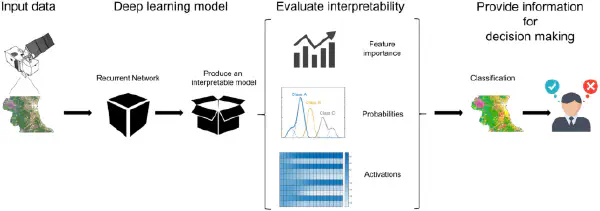
Image classification, a pivotal task in computer vision, involves assigning predefined labels to images by leveraging the distinctive features that distinguish one class from another. This intricate process is made possible through the deployment of neural networks, particularly deep learning algorithms.
In this blog, we will delve into the fascinating realm of image classification with a focus on the formidable capabilities of deep learning.
Understanding Image Classification
At its core, image classification is the art of categorizing images based on their content. The process entails discerning patterns, shapes, and textures within images, enabling the algorithm to accurately assign them to predefined classes or categories. This automated categorization has far-reaching applications, ranging from facial recognition and autonomous vehicles to medical diagnostics and beyond.
The Role of Neural Networks
Neural networks form the backbone of image classification in the era of deep learning. These artificial intelligence models are inspired by the human brain’s intricate network of interconnected neurons. Deep learning, a subset of machine learning, harnesses the power of neural networks with multiple layers (deep neural networks) to extract hierarchical features from input data.
Convolutional Neural Networks (CNNs): A Cornerstone in Image Classification
In the realm of image classification, Convolutional Neural Networks (CNNs) have emerged as a cornerstone. CNNs are specifically designed to process structured grid data, making them exceptionally well-suited for tasks like image recognition. Their ability to automatically learn hierarchical representations of features from raw pixel values has revolutionized image classification.
Steps in Image Classification with Deep Learning
- Data Collection and Preprocessing: Before delving into deep learning, a robust dataset is essential. Collect a diverse set of images representing each class. Preprocess the data by resizing, normalizing, and augmenting images to enhance the model’s ability to generalize.
- Building the Model: Constructing a deep learning model involves defining the architecture of the neural network. For image classification, a typical architecture might include convolutional layers for feature extraction, followed by fully connected layers for classification.
# Example CNN architecture with Keras
from keras.models import Sequential
from keras.layers import Conv2D, MaxPooling2D, Flatten, Dense
model = Sequential()
model.add(Conv2D(32, (3, 3), input_shape=(224, 224, 3), activation='relu'))
model.add(MaxPooling2D(pool_size=(2, 2)))
model.add(Flatten())
model.add(Dense(units=128, activation='relu'))
model.add(Dense(units=num_classes, activation='softmax'))
- Training the Model: Train the model on the prepared dataset using an optimization algorithm and a loss function. Monitor the model’s performance on a validation set to ensure it generalizes well to unseen data.
# Example training with Keras
model.compile(optimizer='adam', loss='categorical_crossentropy', metrics=['accuracy'])
model.fit(train_data, train_labels, validation_data=(val_data, val_labels), epochs=10, batch_size=32)
Evaluation and Fine-Tuning: Evaluate the model on a separate test set to assess its performance. Fine-tune hyperparameters or modify the architecture based on the evaluation results.
Inference: Once the model is trained and fine-tuned, it can be used for making predictions on new, unseen images.
Conclusion 🏁
Image classification with deep learning, powered by neural networks, has ushered in a new era of automation and accuracy. From identifying objects in photos to aiding medical professionals in diagnoses, the applications are vast and impactful. As technology continues to advance, the synergy between image classification and deep learning will undoubtedly pave the way for even more groundbreaking innovations.
Incorporate these insights into your deep learning endeavors, and witness the transformative potential of image classification in the digital age.